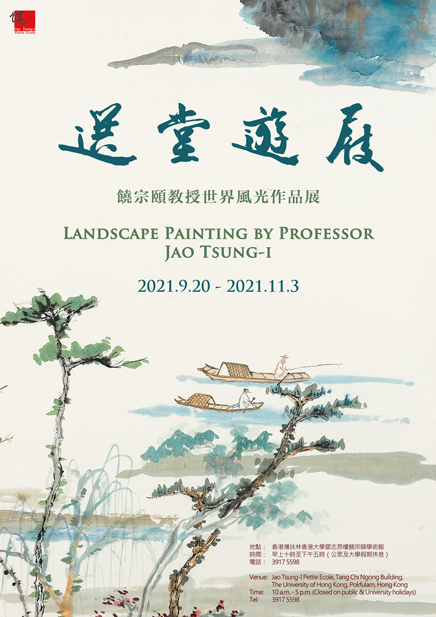藝術
選 堂 遊 屐 ─ 饒 宗 頤 教 授 世 界 風 光 作 品 展
LANDSCAPE PAINTING BY PROFESSOR JAO TSUNG-I
| 日期: | 2021年9月20日 - 11月3日 |
| 時間: | 上午10:00 - 下午5:00(星期一至五) (公眾及大學假期休息) |
| 地點: | 香港大學饒宗頤學術館(香港 薄扶林 香港大學 鄧志昂樓) |
| 查詢: | 3917 5598 |

前言
自1960年代末至1970年代,中國因為修路及建設等關係,不少漢及漢以前的文物出土,其中最重要的就是竹木簡。這些書有文字的竹木簡,是研究秦漢歷史的第一手資料。1970年代末,饒宗頤教授剛從大學退休,讓他有時間到中國各地參看這些出土文物,這為他在研究中國秦、漢及新莽史上,提供了不少前人所未見的資料。饒教授因而說,他比宋明研究古史的人都來得幸運,因為當時宋明學者只要偶然見到一兩條書有文字的竹木簡,就視其為難得一見的珍寶,而他卻有幸見到大量的這類出土資料。這使他在秦漢史研究方面,開創了不少新的領域。
饒教授在穿梭中國各地觀看這些史料時,同時亦遊歷各地的風光。每到一處,他就寫上畫稿,亦把對當地的觀感寫錄成詩。後來,他再利用這些畫稿及詩文,創作了不少寫生作品。今次展出的作品便是這類山水畫的其中一部分。
另外,饒教授在退休之後,亦在亞洲、歐洲、北美洲、澳洲等地遊覽過不少名山勝水,又曾經說過,只可惜他未有機會涉足南美洲及非洲。饒教授繪寫海外風光亦是其山水畫一個很重要的部分,因為在早年,我國畫人很少能像他這樣,有機會到訪世界各地及觀察當地民情。
是次展出共十八件作品,包括了饒教授在世界及中國各地的寫生,可謂是他「讀萬卷書,行萬里路」的明證。
鄧偉雄
2021年9月7日
Foreword
From the late 1960s to the 1970s, a great number of Han and pre-Han relics were unearthed in China due to road building and construction work, and the most notable of which were bamboo and wooden slips, which provided the first-hand information for the study of Qin and Han history. In the late 1970s, Professor Jao Tsung-i retired from university, which afforded him the time to travel across China to see these excavated relics, and it also provided him with unprecedented information for his research on the history of the Qin, Han, and Xin dynasties. Professor Jao thus stated that he was more fortunate than Song and Ming scholars of ancient history. They might only see one or two inscribed bamboo and wooden slips and regarded them as rare treasures. In contrast, he was fortunate to see a large amount of such excavated materials, which enabled him to break new ground in studying Qin and Han history.
As Professor Jao went throughout China to examine these materials, he also enjoyed the scenery of each place. Every place he visited, he made a sketch and composed a poem about his impressions of it. He then used these sketches and poems to produce many more sketching works. This exhibition features some of these landscape paintings.
Additionally, Professor Jao visited many renowned attractions in Asia, Europe, North America, and Australia after his retirement. Still, he once expressed regret that he did not have the opportunity to tour South America and Africa. Professor Jao’s paintings of overseas scenery are also an essential component of his landscape painting since few Chinese artists had the chance to travel the globe and observe local cultures as he did during early days.
The 18 works on display include Professor Jao’s sketches of scenery in China and all over the world. For him, it is a perfect manifestation of the proverb “reading ten thousand books and traveling ten thousand miles.”
Tang Wai Hung
7 September 2021
